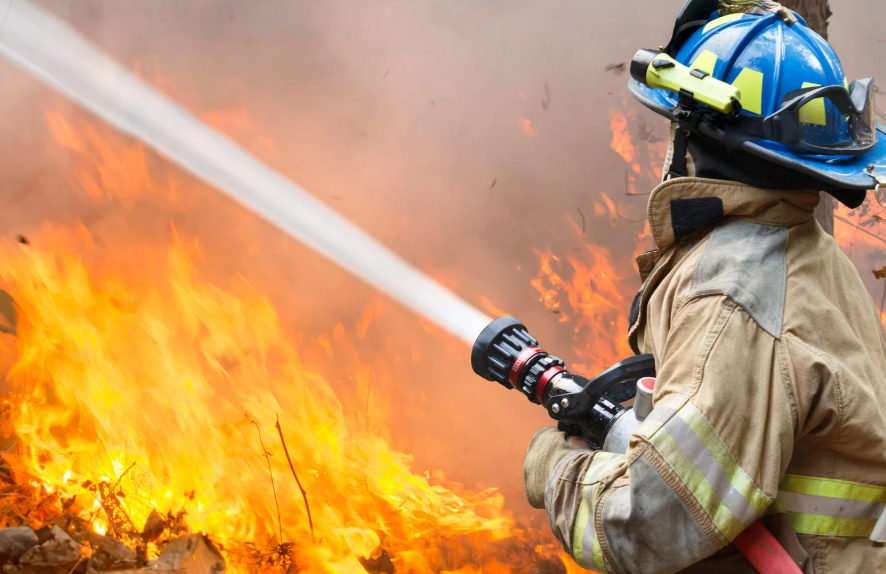Introduction to the Pacific Palisades Wildfire
The recent wildfire that broke out in the Pacific Palisades area of Los Angeles has drawn widespread attention due to its rapid spread and devastating impact on the local community. This wildfire, fueled by the notorious Santa Ana winds, has not only burned over 1,200 acres but has also destroyed numerous homes in its wake. The enormity of this event has necessitated urgent evacuation efforts and has put a considerable strain on local firefighting resources and first responders.
The Impact of Santa Ana Winds
Santa Ana winds, known for their dry, hot conditions, often exacerbate wildfire situations in Southern California. In this instance, the powerful gusts have allowed the fire to spread quickly, creating dangerous conditions that hinder containment efforts. The winds have carried embers into dry brush miles away from the main fire, igniting new hotspots and further challenging the work of firefighters. As these winds continue to whip through the area, the flames have not only advanced unpredictably but have also posed significant risks to both lives and properties.
Evacuation and Emergency Response
As the fire expanded, local officials moved swiftly to declare a state of emergency, allowing them to mobilize additional resources from neighboring counties. Approximately 30,000 residents have been urged to evacuate, many of whom were forced to leave their homes with little warning and even less preparation. Evacuation centers quickly opened their doors to accommodate those displaced, highlighting the urgent need for community support during such crises. Despite emergency services responding quickly, the ferocity of the winds and flames has challenged even seasoned first responders.
Firefighting Efforts and Challenges
The firefighting efforts in response to the wildfire have been multifaceted. Helicopters and fixed-wing aircraft have been deployed to drop water and fire retardant on the most active areas of the fire. Ground crews have also worked tirelessly to establish containment lines and protect residential neighborhoods. However, the rapid pace of the fire and the volatile weather conditions have rendered these efforts ineffective at times, revealing the intricate challenges that firefighters face during such extreme events.
Community Impact and Emotional Toll
The emotional and physical toll on the Pacific Palisades community has been profound. Families have lost homes and personal possessions within moments, leaving them in dire situations. The psychological distress associated with such a disaster can be immense, as many residents grapple with loss and uncertainty. In light of these circumstances, community leaders have emphasized the importance of adhering to evacuation orders and staying informed through official channels to ensure the safety of individuals and families affected by the fire.
Investigation into the Cause
As authorities work to manage the fire, the cause remains under investigation. However, early speculation suggests that it may have originated near a popular hiking trail, although detailed investigations will be necessary to ascertain the precise factors that led to this devastating wildfire. Understanding the cause is crucial, not only for accountability but also for preventing future incidents in the region, which has recently faced increased wildfire activity due to climatic changes and foregone preventative measures.
Conclusion
The wildfire in the Pacific Palisades serves as a stark reminder of the challenges posed by natural disasters, particularly in fire-prone areas like Southern California. The swift response from local officials and firefighting teams demonstrates the urgency and importance of having robust emergency plans in place. As the community begins to recover, the need for support and resources will be essential in helping residents rebuild their lives and homes. Ongoing investigations into the cause of the fire will be crucial for future preparedness initiatives and ensuring community safety.
FAQs
What should residents do during a wildfire evacuation?
Residents should follow evacuation orders promptly, gather essential items such as medications and important documents, and stay informed through official communication channels for updates on the situation.
How can communities prepare for wildfires in the future?
Communities can enhance their preparedness by creating and maintaining defensible space around properties, developing emergency communication plans, and participating in local fire safety education programs.
Are there resources available for displaced residents?
Yes, evacuation centers and local organizations often provide resources such as shelter, food, medical care, and counseling for those affected by wildfires. Residents are encouraged to reach out to local government and community support services for assistance.
How can I support firefighting efforts and those affected by wildfires?
Individuals can support firefighting efforts by donating to local fire charities, volunteering at relief centers, or supporting organizations that assist affected families with financial aid and resources.

